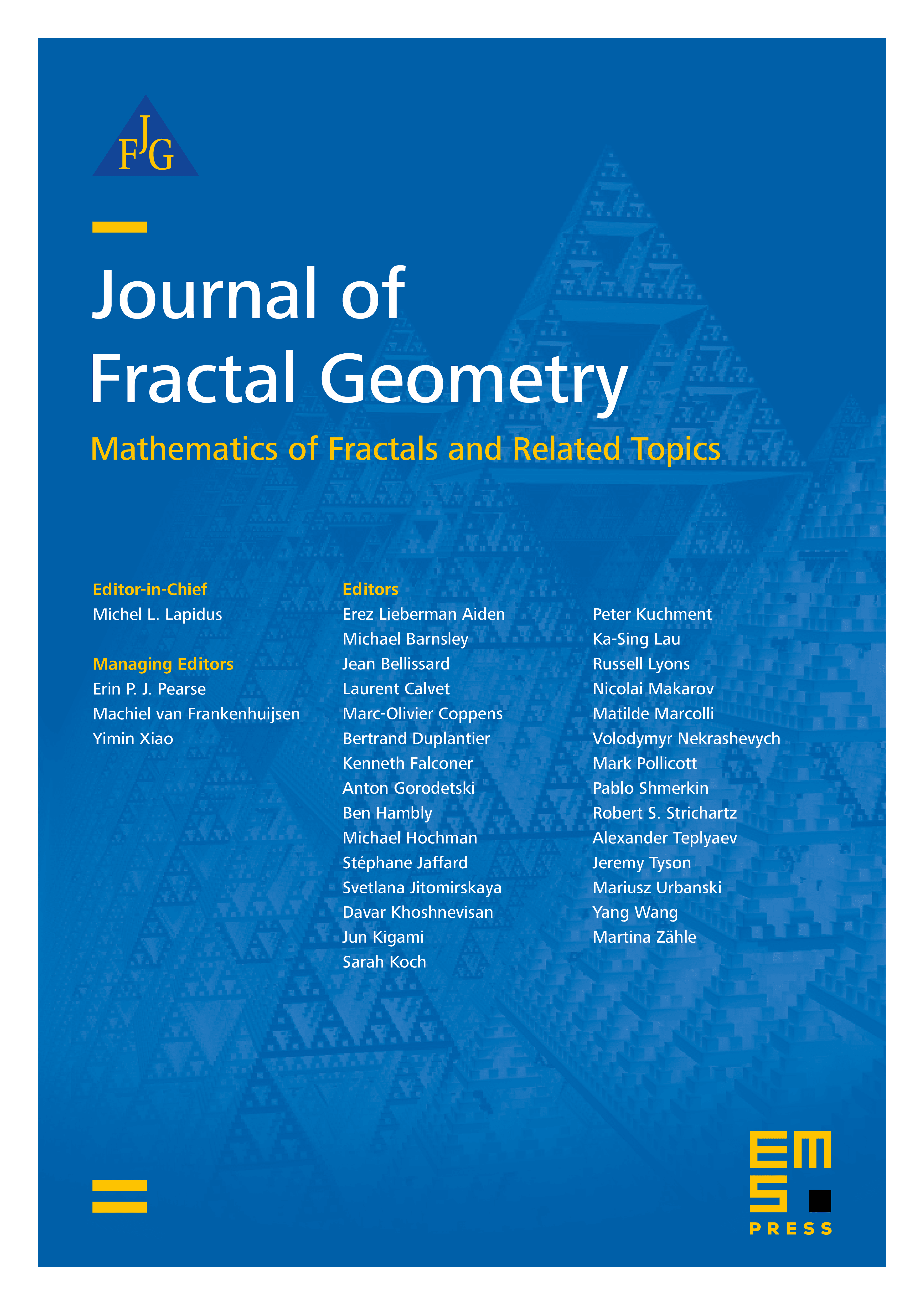Internal aggregation models with multiple sources and obstacle problems on Sierpiński gaskets
Uta Freiberg
Technische Universität Chemnitz, GermanyNico Heizmann
Technische Universität Chemnitz, GermanyRobin Kaiser
Universität Innsbruck, AustriaEcaterina Sava-Huss
Universität Innsbruck, Austria

Abstract
We consider the doubly infinite Sierpiński gasket graph , rescale it by factor , and on the rescaled graphs , for every , we investigate the limit shape of three aggregation models with initial configuration of particles supported on multiple vertices. The models under consideration are: divisible sandpile in which the excess mass is distributed among the vertices until each vertex is stable and has mass less or equal to one, internal DLA in which particles do random walks until finding an empty site, and rotor aggregation in which particles perform deterministic counterparts of random walks until finding an empty site. We denote by the infinite Sierpiński gasket, which is a closed subset of , for which represents the level- approximating graph, and we consider a continuous function . For we solve the obstacle problem, and we describe the noncoincidence set as the solution of a free boundary problem on the fractal . If the discrete particle configurations on the approximating graphs converge pointwise to the continuous function on the limit set , we prove that, as , the scaling limits of the three aforementioned models on starting with initial particle configuration converge to the deterministic solution of the free boundary problem on the limit set . For we also investigate boundary regularity properties.
Cite this article
Uta Freiberg, Nico Heizmann, Robin Kaiser, Ecaterina Sava-Huss, Internal aggregation models with multiple sources and obstacle problems on Sierpiński gaskets. J. Fractal Geom. 11 (2024), no. 1/2, pp. 111–160
DOI 10.4171/JFG/141